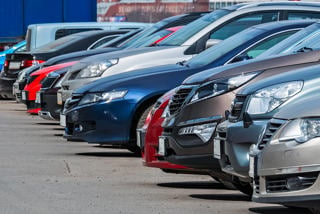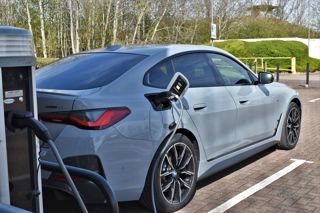Steve Tigar, founder and CEO of LoveElectric
The fleet industry rumour mill is rife with rumblings from fleet managers who have badgered their HR departments to introduce a salary sacrifice car scheme, chased their finance departments to complete credit check forms, and then sat back and watched as the needle on the dial of orders barely rises from zero.
This frustration at low uptake is entirely understandable, especially with the fundamental advantages of salary sacrifice car schemes never having been so strong.
In the midst of a cost-of-living crisis, which employee would not be thrilled to save hundreds of pounds per month in tax and National Insurance (NI) by financing their car out of gross income?
When household budgets are on a knife-edge, which employee would not jump at the chance to avoid the risk of unexpected service and maintenance bills by driving an ‘all inclusive’ car?
And at a time of skyrocketing pump prices, which employee would not want to pocket pounds on every journey by using electricity not fossil fuels to power their car (due to benefit in kind tax rules, salary sacrifice only really works for electric cars)?
Moreover, at a time when it is difficult to retain staff and increase salaries in line with inflation, which employer can ignore the opportunity to offer (at zero cost to themselves) a cost-neutral service which saves the employee money and serves as a valuable green benefit that reduces the Scope 3 greenhouse gas emissions associated with staff commuting to work?
So why does the Association of Fleet Professionals (AFP) report that some of its members are disappointed by low numbers of participation in their salary sacrifice car schemes?
Sweep-it-under-the-carpet answers dismiss this poor performance by saying most drivers fund their cars through a finance arrangement, so will only consider a salary sacrifice replacement when their current contract comes to an end; or suggest that economic uncertainty is putting off employees from making financial commitments; or point to long lead times as a brake on driver enthusiasm.
None of these explanations, however, address why some salary sacrifice car schemes are roaring successes, while others sit unloved in HR benefit boxes.
A more honest response has to focus on the design and implementation of schemes.
Salary sacrifice car schemes are not off-the-shelf products; they require a thoughtful partnership between supplier and customer.
Firstly, any salary sacrifice supplier should be able to provide comprehensive marketing materials, including online or in-person seminars, to sell the benefits and clearly explain the details of how these schemes operate to employees.
Furthermore, suppliers need to work with employers to maintain the profile of schemes, so they stay front and centre of employee minds, rather than gather dust like junk mail in the hallway of a student house.
Secondly, schemes must be simple for employees to access, letting them generate their own quotations rather than ensnaring them with headline rentals based on large up front deposits and then disappointing them when the true costs are revealed.
Schemes also need to be transparent about any potential pebbles in shoes, such as early termination fees or maternity leave, without drowning drivers in paperwork.
And thirdly, in a classic case of success breeding success, the quicker salary sacrifice cars start to appear in office car parks, the faster subsequent orders will follow. For this, it helps to have a nimble supplier.
Long lead times for new vehicles may be the bane of fleet manager lives, but small batches and cancelled orders of new electric cars are available at much shorter notice.
An agile leasing company will work with its customers to market these opportunities to salary sacrifice audiences, aware that a driver might be happy to switch from one SUV to another, or one premium brand to another, if it means delivery within weeks not months.
Employers can play their part, too, with some environmentally focused businesses allocating a percentage of their Class 1A savings to reduce salary sacrifice lease rentals.
Plus, the more complete the EV eco-system, the more likely staff are to switch to battery power, so schemes that allow drivers to include the cost of a home charger within their monthly rental, and installing workplace chargers, both help with a seamless transition to zero emission motoring for as many employees as possible.
Salary sacrifice car schemes are hugely attractive, and a good provider will walk the business through the entire process and answer any questions the business wants to ask.
> Interested in comparing electric vehicle data? Check out our EV tool.
> Interested in ensuring the efficient use of EVs. Check out our dedicated editorial sections: Insight & policy | EV news | Charging & infrastructure | Costs & incentives | Benefit-in-kind | EV case studies | EV road tests





















Login to comment
Comments
No comments have been made yet.